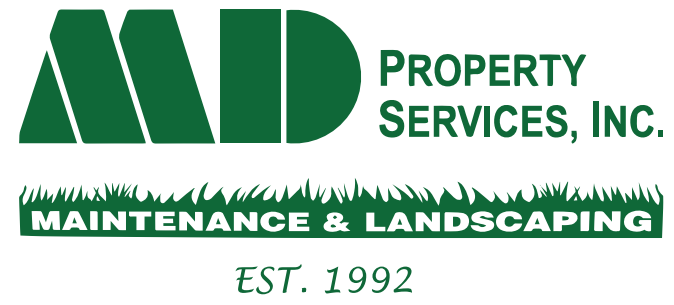Utah Commercial Lawn Construction
Lawn construction involves creating a new lawn or renovating an existing one from scratch, whether for your home or business. This process goes beyond routine maintenance and includes tasks such as preparing the soil, selecting the right type of grass for Utah’s climate, establishing proper drainage, and ensuring optimal growth conditions.
At MD Property Services, Inc., we specialize in professional lawn construction for commercial properties across Utah.
Call For a Free Quote
Site Assessment and Planning:
- Evaluate the area where the lawn will be established or renovated. Consider factors such as sunlight exposure, soil type, drainage, and any existing structures or obstacles.
- Determine the purpose of the lawn: Is it meant for recreational activities, landscaping, or purely aesthetic reasons?
Soil Preparation:
- Test the soil to assess its pH, nutrient levels, and drainage capacity. Amend the soil as needed to create an ideal environment for grass growth.
- Clear the area of debris, rocks, weeds, and old vegetation.
Grading and Leveling:
- Ensure the site is properly graded and leveled to prevent water pooling and promote even growth. This might involve adding or removing soil as necessary.
Drainage Considerations:
- If the area has drainage issues, address them by installing drainage systems, such as French drains or swales, to prevent waterlogging.
Sodding or Seeding:
- Choose between laying sod (pre-grown grass rolls) or seeding the area with grass seed. Sod provides an instant lawn, while seeding takes longer to establish but offers more options for grass varieties.
Grass Selection:
- Select the appropriate grass species and cultivars based on climate, sunlight conditions, and intended use. Some common grass types include Kentucky bluegrass, fescue, Bermuda grass, and zoysia grass.
Sod Installation:
- If using sod, lay the rolls in a staggered pattern, ensuring tight seams and good soil-to-sod contact. Water thoroughly after installation.
Seeding and Germination:
- If seeding, evenly spread grass seed over the prepared soil and cover with a thin layer of soil or straw to protect the seeds. Water regularly to keep the soil consistently moist for germination.
Initial Care:
- Provide consistent irrigation to promote healthy root establishment.
- Limit foot traffic on the newly seeded or sodded area to avoid damaging the grass.
Fertilization and Maintenance:
- After the grass is established, follow a fertilization schedule based on the grass type and local recommendations.
- Begin mowing when the grass reaches the recommended height, ensuring not to remove more than one-third of the grass blade at a time.
Weed and Pest Control:
- Monitor for weeds and pests and take appropriate action to prevent them from taking over the lawn.
Regular Maintenance:
- Once the lawn is established, continue with regular lawn maintenance practices such as mowing, edging, trimming, and fertilization.
